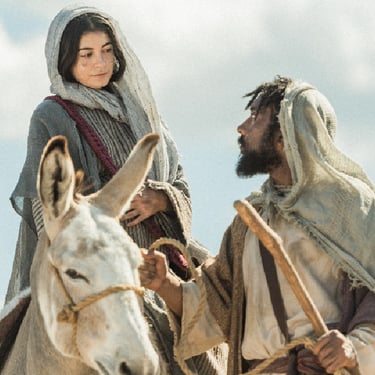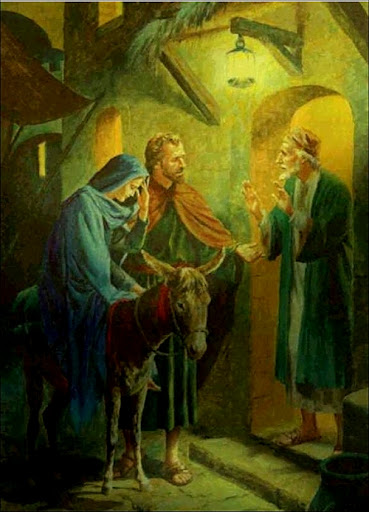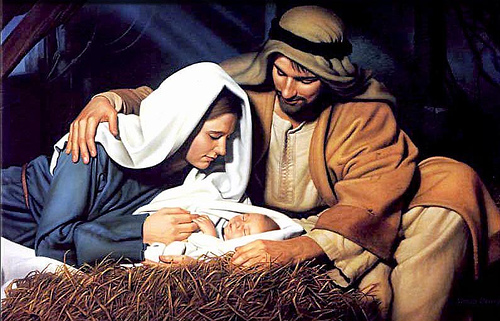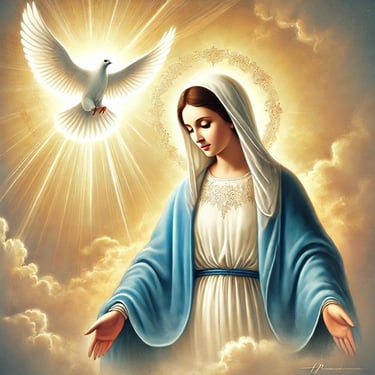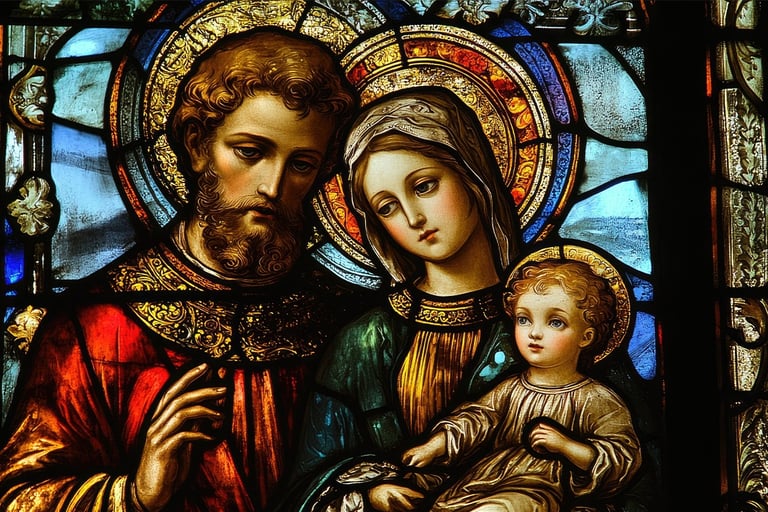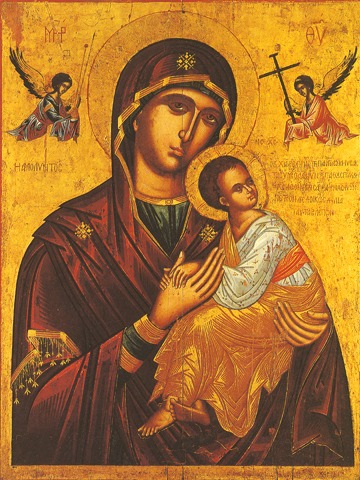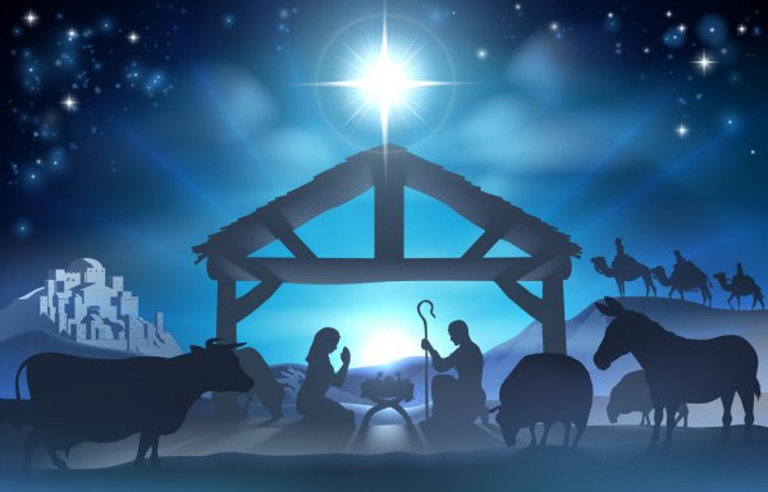Mary’s Perspective on the Nativity as the Mother of Jesus
See the Nativity through Mary's perspective. Learn about her faith, feelings & experiences as Jesus' mom. Get a deeper, personal understanding today.
Grace Callahan
3/21/20259 min read
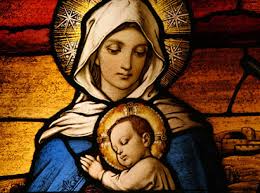

Experiencing the Nativity Through Mary’s Perspective
The Nativity story is well-known. Angels sang. Shepherds knelt. Wise men brought gifts. But what did Mary feel? She was just a young girl. An angel told her she would have God's son. She wasn't in a palace. She had no big announcement. It was just her and a mystery. This article explores Mary's faith and struggles. See the Nativity through her eyes.
Mary’s Annunciation – A Life-Altering Message
Imagine going about your day, maybe drawing water from a well or kneading dough, when suddenly an angel appears and tells you that you—an unwed teenager—will give birth to the Son of God. No warning, no time to process, just a divine declaration that will change everything.
That’s exactly what happened to Mary when the angel Gabriel appeared to her (Luke 1:26-38). “Greetings, you who are highly favored! The Lord is with you.” Favor? A blessing? Maybe. But also a staggering responsibility.
The Weight of Divine Favor—Blessing or Burden?
We often romanticize this moment, picturing Mary as a serene figure nodding in quiet acceptance. But let’s be real—this was world-shattering news. A miraculous pregnancy outside of marriage? In her culture, that wasn’t just inconvenient; it was dangerous. At best, she’d face humiliation. At worst, she could be accused of adultery and stoned.
And yet, her response? A simple, faithful “Let it be to me according to your word” (Luke 1:38). No bargaining. No demands for proof. Just trust. Could any of us say the same in her place?
Immediate Challenges – Explaining the Unexplainable
Then came the practical nightmare: how do you explain this to Joseph? To your parents? To a town that thrives on whispered scandal? Joseph, a righteous man, could have left her, and no one would have blamed him. The stakes were enormous.
Mary’s yes wasn’t just about faith—it was about courage. She stepped into a divine calling that could have cost her everything. And yet, she walked forward, trusting that God would handle what she could not.
Would we have done the same?
The Journey to Bethlehem – Physical and Emotional Trials
We tend to gloss over the journey to Bethlehem as just another plot point in the Nativity story. But think about it—this was a grueling, exhausting trek for anyone, let alone a woman in the final days of pregnancy.
Traveling While Heavily Pregnant – The Brutal Reality
Mary didn’t get the luxury of a comfortable ride. No soft cushions, no smooth roads. Just mile after mile of rough terrain, likely on foot or, at best, riding a donkey—a bumpy, uncomfortable, and slow ordeal. Scholars estimate the journey from Nazareth to Bethlehem was about 90 miles, taking at least four to seven days. Imagine the swollen feet, the aching back, the relentless fatigue.
And then there’s the emotional toll. Every mother dreams of a safe, warm space to give birth. Mary knew she had no such guarantee. No midwife. No proper lodging. Just the unknown ahead.
Mary and Joseph’s Bond – Trusting God in the Dark
This journey wasn’t just physical—it tested their faith, their patience, and their trust in each other. Joseph had already made the choice to stay by Mary’s side despite the scandal surrounding her pregnancy. But now, with every step toward Bethlehem, he had to protect and provide for her in ways he’d never expected.
Did they share quiet conversations under the stars, reminding each other that God had a plan? Did Mary ever voice her fears, or did she hold them silently, trusting Joseph to bear the weight with her?
Rejection at Bethlehem – The Final Blow
And then—after all that—they arrived, only to be told there was no room for them. Imagine Mary’s exhaustion, her desperation. She had carried this child with faith, endured whispers and judgment, survived the brutal journey… and now, she was about to give birth with nowhere to go.
Rejection. Vulnerability. Frustration. How could this be part of God’s plan?
Yet, in the middle of that dark, uncertain night, salvation entered the world. Not in a palace. Not even in a proper home. But in the most humble of places—a stable.
Would any of us have had the strength to trust God in that moment? Mary did. And that’s why her story still speaks to us today.
The Birth of Jesus – A Sacred Yet Humble Moment
We picture nativity scenes as peaceful, almost ethereal—a glowing Mary, a cooing baby, a gentle night. But the reality? Far from it. Childbirth is intense, messy, and raw. Now, imagine doing it in a stable.
The Raw Reality of Childbirth in a Manger
No warm bed, no midwife, no sterilized tools. Just hay, dirt, and the smell of animals. Mary—exhausted from travel, her body wracked with labor pains—had no choice but to deliver her baby in the most unsanitary, uncomfortable place imaginable. Did she scream in agony? Did she cry from exhaustion? We don’t know, but what we do know is that she endured.
And then, finally—it was over. The Son of God, cradled in her arms, wrapped in whatever cloth she had. No grand announcement, no royal attendants—just a teenage girl, a newborn, and the overwhelming mix of pain and wonder that comes with bringing life into the world.
Exhaustion and Awe – Holding the Messiah
In that quiet moment, did it fully sink in? She had carried this child for months, endured whispers of scandal, suffered the strain of the journey, and now… here He was. The Messiah. The long-awaited Savior. But to Mary, He was also just her baby. Tiny fingers wrapped around hers, his cries breaking the silence of the night.
The divine had become human, and she was the first to hold Him. The weight of that moment must have been staggering.
First Visitors – Strangers Drawn to Her Child
Then came the visitors—not family, not wealthy benefactors, but shepherds. The lowest of society, rough men who spent their lives outdoors, suddenly kneeling before her son, speaking of angels and heavenly choirs (Luke 2:8-20).
Later, wise men from the East would come bearing gifts, recognizing Jesus as a king (Matthew 2:1-12). Did Mary marvel at the contrast? Her child, born in poverty, yet honored by the heavens and the nations.
From the moment of His birth, Jesus was turning expectations upside down. And Mary, exhausted but filled with wonder, was watching it all unfold.
This wasn’t just any birth. This was history splitting in two. And Mary was at the center of it.
Mary’s Faith and Motherhood – Pondering the Mystery
Motherhood changes you. It reshapes your priorities, deepens your love, and fills you with both joy and fear. Now, imagine being Mary—raising a child you knew was the Son of God. How do you even begin to process that?
"Mary Treasured Up All These Things in Her Heart" (Luke 2:19)
Luke 2:19 gives us a rare glimpse into Mary’s inner world: “But Mary treasured up all these things and pondered them in her heart.”
It’s a striking verse. While shepherds ran off proclaiming what they had seen, Mary stayed quiet, reflecting. Was she overwhelmed? In awe? Did she feel the weight of responsibility pressing down on her? She had witnessed angelic proclamations and prophetic signs, but she was still a mother, navigating the everyday realities of raising a child.
Evolving Understanding – From Mother to Disciple
Did Mary always understand Jesus' identity? Or did it unfold slowly, moment by moment? She had been told He was the Messiah, but what did that mean in practical terms?
She watched Him take His first steps, say His first words—did He seem different?
When He lingered in the temple at twelve, amazing the teachers with His wisdom (Luke 2:41-50), did she see glimpses of who He would become?
When He called God His Father, was it a confirmation—or a reminder that He belonged to a greater purpose beyond her?
As any mother would, she must have wrestled with the mystery of it all.
Joy and Sacrifice – The Dual Reality of Mary’s Calling
Motherhood is an act of love, but also of surrender. You nurture, you guide, you protect—but ultimately, you let go. And for Mary, that reality carried an even deeper sorrow.
Simeon had warned her when Jesus was an infant: “A sword will pierce your own soul too” (Luke 2:35). That must have haunted her. What would it mean?
Did she sense it when Jesus began His ministry, drawing crowds but also enemies? Did she feel it when He spoke of His coming suffering? When she stood at the foot of the cross, watching her son—the child she once cradled—take on the weight of the world, did she remember that prophecy and finally understand?
Mary’s journey wasn’t just about faith; it was about holding on and letting go. Trusting in God’s plan, even when it led to unimaginable pain. And in that, she wasn’t just the mother of Jesus—she was a model of faith for all of us.
The Theological Significance of Mary’s Perspective
Mary’s story isn’t just personal—it’s profoundly theological. Her role in the Nativity isn’t incidental; it’s central to the entire arc of salvation history. To fully grasp the weight of her "yes," we have to step back and see Mary not just as a mother, but as a pivotal figure in God’s redemptive plan.
Mary as the New Eve – Obedience That Reversed the Fall
From the earliest Christian writings, Mary has been compared to Eve. The first woman, through disobedience, opened the door to sin and death. Mary, through her obedience, became the vessel through which salvation entered the world.
Eve’s choice: She doubted God’s word, grasped at something not meant for her, and brought humanity into exile.
Mary’s choice: She trusted God completely, surrendered her own plans, and bore the One who would bring humanity home.
The contrast is striking. Eve’s "no" led to the fall; Mary’s "yes" led to redemption. In her, we see a reversal of the curse, a restoration of what was lost.
Mary’s Unique Role in Salvation History
Mary wasn’t just a passive participant in the story—she was uniquely chosen for a reason. Her body became the bridge between heaven and earth. The divine became flesh within her womb. That reality is staggering.
In Catholic and Orthodox theology, this is why Mary is called Theotokos—the “God-bearer.” Not simply the mother of a great teacher, but the mother of God Himself in human form. This truth shaped early Christian doctrine and continues to be a cornerstone of Christology.
And yet, her greatness wasn’t in power or status. It was in humility. She wasn’t a queen in the way the world understands royalty. She was a servant, magnifying the Lord, not herself (Luke 1:46-55).
What Mary’s Faith and Surrender Teach Modern Believers
Mary’s perspective forces us to ask uncomfortable questions:
Do we trust God even when His plan disrupts ours?
Are we willing to surrender, not just in the big moments, but in the everyday struggles?
Do we magnify God’s work in our lives, or do we seek control and recognition?
Mary didn’t have all the answers. She wasn’t given a detailed roadmap. But she walked forward in faith anyway. And in doing so, she teaches us what true discipleship looks like—not grasping for certainty, but trusting in the One who holds the future.
Her story isn’t just ancient history. It’s an invitation. The same God who called Mary calls us—to faith, to trust, to surrender. The only question is: Will we say yes?
Conclusion:
Reflecting on Mary’s Experience
The Nativity isn’t just a historical event—it was a deeply human, deeply personal journey for Mary. She wasn’t just a figure in a Christmas story; she was a young woman who faced uncertainty, pain, and sacrifice, all while carrying the greatest promise the world had ever known.
Her faith wasn’t passive. It was bold. She said yes without knowing all the answers. She endured judgment, hardship, and the weight of raising the Son of God. And through it all, she trusted.
Today, Mary remains a model for every believer—not because she had an easy road, but because she walked it with unwavering faith.
So, what can we learn from her? How often do we resist God’s plans because they don’t fit our expectations? How do we respond when faith requires discomfort, sacrifice, or trust in the unknown?
This Christmas, let’s not just observe the Nativity—let’s enter it through Mary’s eyes. Let’s sit with the wonder, the struggle, and the surrender. Because in her story, we find our own call to faith.




